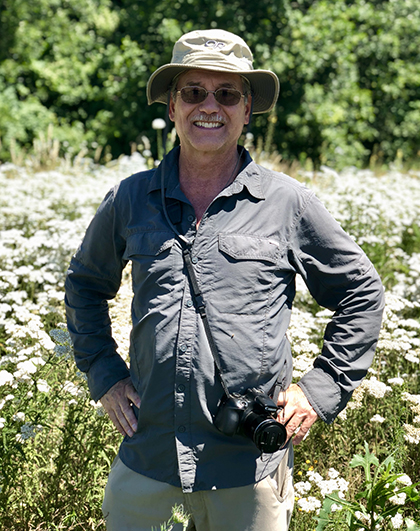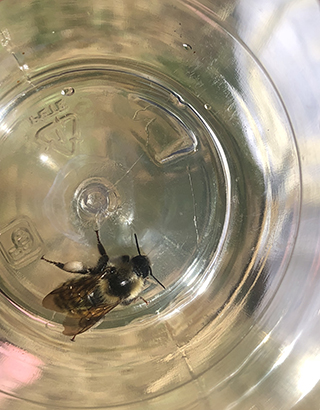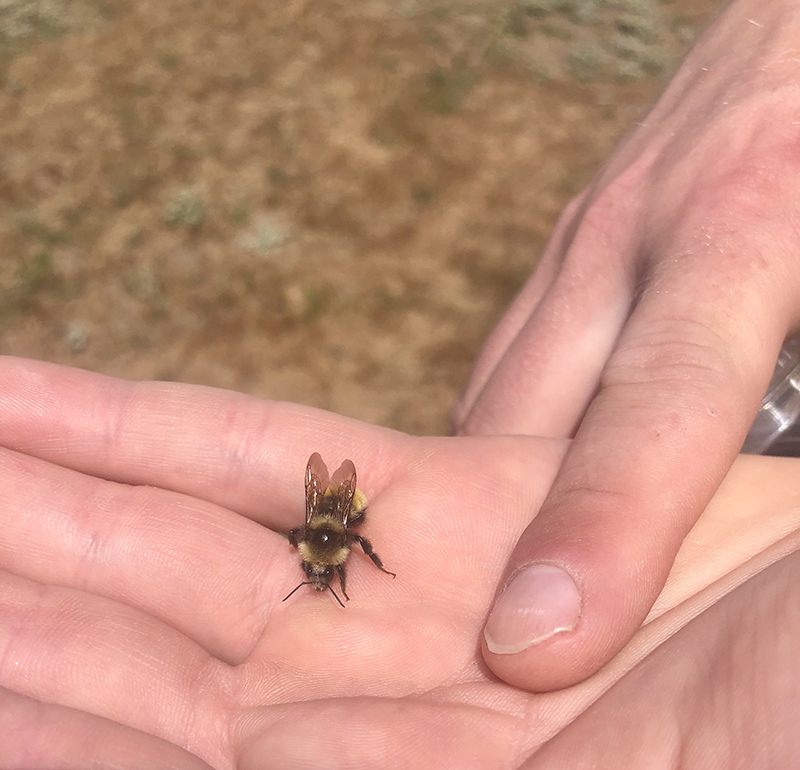Bombus appositus, a.k.a., white-shouldered bumblebee, is one of the native bees we found in the Whilamut Natural Area during our Pollinator Week Bee Survey with Walama Restoration and Oregon Bee Atlas.
While working alongside other local naturalists and bee-enthusiasts at the 2nd Annual Bee Count, I was thrilled to discover that at least 24 different species of native bees have returned to the Whilamut Natural Area, a rehabilitated prairie habitat north of the Willamette River. This was a remarkable turn-around for this area since non-herbicide habitat restoration efforts were implemented 14 years ago.
During Pollinator Week, representatives from Beyond Toxics, Walama Restoration Project, Mount Pisgah Arboretum, and Oregon Bee Atlas worked with our community to identify and track wild and native bees in the Whilamut Natural Area. I am happy to report some of the pollinator species have returned to this area since non-herbicide habitat restoration efforts were implemented. We discovered that at least 24 different species of native bees have returned to this rehabilitated prairie habitat.

A naturalist for over 30 years in the Eugene area, Rick Ahrens is associated with Nearby Nature, West Eugene Wetlands, and Mt. Pisgah Arboretum.
The east Whilamut Natural Area (WNA) is an urban park that has been recognized by the City of Eugene as valuable habitat to OUR natural plant communities – upland prairie, oak savanna, and riparian woodland – that support native pollinators, birds and other wildlife. A long-term priority for the east WNA is to provide non-toxic habitat and forage for native pollinator species by introducing a large diversity of native plants without the use of pesticides and herbicides.
In the 60s and 70s, the east WNA was a toxic landfill--literally a dump where pollinator diversity was presumably zero. Transforming this area from a former landfill site to a vibrant prairie plant community, without the use of pesticides or herbicides, has significantly boosted the biodiversity in this natural and recreational area. The Whilamut Natural Area also helps non-profit organizations educate community members about the importance of non-chemical land-use decisions, especially adjacent to river banks and native pollinator corridors.
 There was such an enthusiastic response to our bee survey that we plan on doing much more native bee monitoring in the coming year. Ongoing monitoring is needed to better understand the species diversity and richness within this bio-diverse natural area.
There was such an enthusiastic response to our bee survey that we plan on doing much more native bee monitoring in the coming year. Ongoing monitoring is needed to better understand the species diversity and richness within this bio-diverse natural area.
Krystal Abrams, Pollinator Projects Manager
Beyond Toxics





